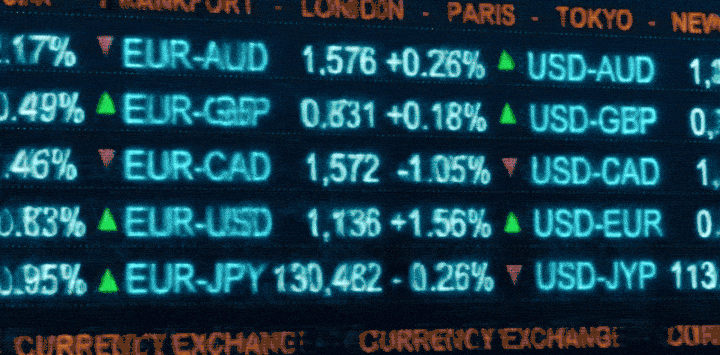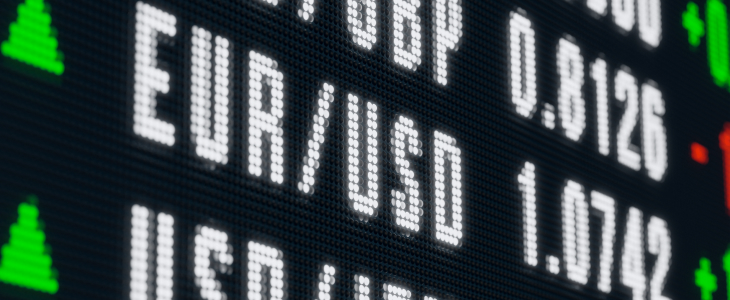Have you noticed how some stocks go up or down along with certain currency pairs? The short is that stocks and currency pairs are related through economics, trade, and investor sentiment. A stock that relies on a country’s economy tends to move in the same direction as that country’s currency.
You will learn these relationships here and implement them in your next trade.

All About Currency Pairs and Stocks
Currency pairs express the value of one currency as the rate of a second currency. Likewise, in the forex market, traders buy and sell currencies as per economic conditions. Stocks are ownership chunks of companies and are affected by earnings, market sentiment, and the global economy.
Stocks and currency pairs are both influenced by economic news, interest rates, inflation, and geopolitical events. This is where the correlations come in.
Correlation of Stocks and Currency Pairs
Correlation is how two assets move about one another. Traders often rely on stocks and currency pairs where both move in the same direction (or opposite direction) and provide information to predict the direction of both.
Two kinds of correlation:
Positive correlation: The stock and currency pair move in the same direction.
Negative Correlation: One goes up while the other one goes down.
Metatrader 4 can assist you in analyzing these correlations in real time. Thus, CFD trading enables traders to benefit from upward and downward market movements.

Types of Correlations
There are different categories of correlations in the forex market:
Commodities-Based Correlation
Commodities are closely related to some currencies, such as the Australian Dollar (AUD) or Canadian Dollar (CAD). For instance, the AUD often travels in lockstep with gold prices.
Export-Driven Correlation
For export-dependent countries, stock markets move in tandem with currencies. Such as the Japanese stock market, which is often correlated with the USD/JPY pair.
Interest Rate Correlation
The country’s increasing interest rates make the currency stronger. But the stocks of those who depend on loans to be cheap are the ones that fall.
With MetaTrader 4, you can easily recognize these correlations and make the right online trading decisions.
Reason Behind the Correlation
There are a few reasons for the correlation between stocks and currency pairs:
- Economic Indicators: Economic well-being is shown in data points like GDP growth, inflation rates, and employment figures. Do you know how a healthy economy raises company earnings, meaning the stock markets rise and the domestic currency appreciates? On the other hand, economic declines can lead to a weakening of stocks and the currency.
- Trade Balances: Higher trade surpluses (i.e., countries exporting more than importing) will often lead to a strong currency. Other countries will seek to balance the demand for goods with increasing currency. That, in turn, penalizes exporters, making their products dearer to overseas buyers and also detracting from stock performance.
- Interest Rate Policies: Central banks influence financial markets by changing interest rates. Higher interest rates attract capital, leading to a stronger currency and weakening stock markets as borrowing becomes more expensive.
On the flip side, lower interest rates can depress a currency but also stimulate stock market growth by allowing cheaper access to capital. It can also lead to the stock market falling when traders run to safe-haven assets such as gold or the U.S. dollar during uncertain times. The opposite happens during periods of optimism.
Platforms like FXcess provide tools to analyze these factors and optimize your strategies accordingly. It presents technical indicators, real-time analysis, and economic calendars.
Examples of Correlation
Here are some examples of real-world situations:
USD/JPY and Nikkei 225 The Japanese stock market (coded by Nikkei 225) tends to go along with the USD/JPY currency pair. A rising USD/JPY (or a weakening Japanese yen against the U.S. dollar) is a boon for Japanese exporters, who will benefit from international competitiveness. On the flip side, a stronger yen leaves Japanese stocks facing headwinds.
EUR/USD and European Stocks A higher euro tends to signal positive sentiment over the Eurozone economy and can raise European stocks such as the DAX 40 (Germany) and the CAC 40 (France). The extremely strong euro is also against exporters, as their products will be more expensive to overseas purchasers. This may eventually harm stock prices in the long run.
AUD/USD and Gold Australia is a big gold exporter, so you should see the Australian dollar (AUD) positively correlated to gold prices. The relationship between the AUD/USD pair and gold is well-known, as the AUD/USD tends to gain strength when gold prices are climbing, and the Australian dollar loses strength when gold prices are falling. This is a relationship that many traders who follow commodity-driven currencies will use to predict AUD/USD movement.
GBP/USD and FTSE 100 British equities, typified by the FTSE 100, also commonly display an inverse relationship with the British pound (GBP). This is largely because increasing FTSE-listed companies derive a substantial fraction of their revenues from international sources. Stock prices can suffer when the pound is strong because overseas earnings are worth less in GBP terms.
Which correlation is the most profitable?
Whether or not a trader makes money this way depends on their strategy, risk aversion, and market conditions. But some correlations are more likely to provide repetitive trading opportunities:
The USD/CAD and oil prices are a well-known love/hate couple that tends to deliver pretty solid signals, making this a commodity trader’s ideal pair.
Gold prices react to global inflation, central bank action, and geopolitical uncertainties, creating constant trading opportunities with AUD/USD and gold.
The correlation between USD/JPY and Nikkei 225 is often transparent due to the Bank of Japan and U.S. Federal Reserve monetary policy factors.
Knowing these patterns will enable you to make the right move while CFD trading.
Conclusion
The correlation between stocks and currency pairs and the reasons for it are explained by economic factors, interest rates, and general investor sentiment. Traders can use platforms like Fxcess and Metatrader 4 to study these relationships for online trading. Reading these trends can keep you one step ahead in the forex market.
FAQs
What is the correlation between two currency pairs?
Co-movement occurs often in major currency pairs (i.e., EUR/USD, GBP/USD). AUD/USD and NZD/USD usually take the same direction, mostly for the same economic reasons.
What currency pair has the highest volatility?
As their economies transform, GBP/JPY is one of the most volatile pairs.
Which of the two has a positive correlation with gold?
Since Australia is one of the largest producers of gold, AUD/USD is highly correlated with gold.
How do I analyze currency pairs?
Metatrader 4 Historical trends, technical indicators, and correlation tools are useful to improve decisions on online trading.
Which is the easiest to trade pair?
The easiest is EUR/USD because it is the most liquid with lower spreads, and there are a lot of analysis tools available in the market.
Disclaimer:
This information is not considered as investment advice or an investment recommendation, but instead a marketing communication. FXCess is not responsible for any data or information provided by third parties referenced, or hyperlinked, in this communication
